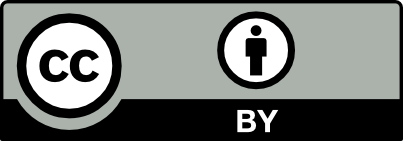Descubriendo los mecanismos de abstracción en el desempeño de equipos de trabajo en niños al resolver problemas computacionales
DOI:
https://doi.org/10.18046/syt.v14i36.2216Palabras clave:
Abstracción, pensamiento computacional, enseñanza de la programación, niños, estudio.Resumen
El desarrollo de competencias que permitan a los niños un desempeño satisfactorio en su proceso de formación y, posteriormente, en su vida laboral o social, se ha convertido en un anhelo de todos los modelos educativos y de formación que se han desarrollado. El presente artículo trata de la relación entre el desarrollo de habilidades de pensamiento, los modelos mentales compartidos y los mecanismos de abstracción, a partir de una revisión teórica y la aplicación con niños de entre ocho y doce años, de la metodología Childprogramming, en una institución de educación pública en Colombia. Se presentan los resultados registrados al término de las prácticas realizadas con este grupo de estudiantes, especialmente al evaluar el uso progresivo de los mecanismos de abstracción en el entorno de Scratch, utilizando la plataforma Dr. Scratch.
Referencias
Brennan, K., & Resnick, M. (2012, April). New frameworks for studying and assessing the development of computational thinking. In Proceedings of the 2012 annual meeting of the American Educational Research Association, Vancouver, Canada [online]. Retrieved from: http://scratched.gse.harvard.edu/ct/files/AERA2012.pdf
Bunge, M. (2000) . La ciencia, su método y su filosofía. México DF: Siglo XXI.
Serna, E. (2011). La abstracción como componente crítico de la formación en ciencias computacionales. Revista Avances en Sistemas e Informática, 8(3), 79-83.
Feierherd, G. E., Depetris, B. O., & Jerez, M. (2001). Una evaluación sobre la incorporación temprana de algorítmica y programación en el ingreso a Informática [paper in VII Congreso Argentino de Ciencias de la Computación]. Retrieved from: http://hdl.handle.net/10915/23229
Hurtado, J. A., Collazos, C. A., Cruz, S. T., & Rojas, O. E. (2012). Child programming: una estrategia de aprendizaje y construcción de software basada en la lúdica, la colaboración y la agilidad. Revista Universitaria RUTIC, 1(1), 9-14. Available at: http://ciclope.unicauca.edu.co/rutic/index.php/rutic/article/view/4
Mönig, J. (2015). Snap: Build your own blocks [online]. Retrieved from: https://github.com/jmoenig/Snap--Build-Your-Own-Blocks
Johnson-Laird, P. N. (1986). Mental models. Cambridge, MA: Harvard University Press.
Jonker, C. M., Van-Riemsdijk, M. B., & Vermeulen, B. (2011). Shared mental models. In M. De-Vos, N. Fornara, J. V. Pitt, & G. Vouros (Eds.), Lecture Notes in Computer Science: Vol. 6541. Coordination, organizations, institutions, and norms in agent systems VI (pp. 132–151). Berlin-Heidelberg, Germany: Springer Verlag.
League, C. (2000). Lambda calculi: A guide for computer scientists by Chris Hankin. ACM SIGACT News, 31(1), 8-13. http://doi.org/10.1145/346048.568490
M. Letsky, N. Warner, S. Fiore, & C. A. P Smith (Eds.). (2008). Macrocognition in teams: Theories and methodologies. Hampshire, UK: Ashgate Publishing.
Ministerio de las Tecnologías de la Información y las Telecomunicaciones [MINTIC]. (2001). Computadores para educar: Historia. Retrieved from: http://www.computadoresparaeducar.gov.co/PaginaWeb/index.php/es/nosotros-2/historia
Moreira, M. A. (1999). Modelos mentais. Investigações em Ensino de Ciências, 4(1), 193-232.
Moroni, N. (2001). Entornos para el aprendizaje de la programación [paper in III Workshop de Investigadores en Ciencias de la Computación]. Available at: http://hdl.handle.net/10915/21707
Ministerio de Educación Nacional [MEN]. (2008). Orientaciones generales para la educación en tecnología [Serie Guías No. 30]. Bogotá, Colombia: MEN. Available at: http://www.mineducacion.gov.co/1621/articles-160915_archivo_pdf.pdf
Page-Jones, M. (1992). Comparing techniques by means of encapsulation and connascence. Communications of the ACM, 35(9), 147-151. http://doi.org/10.1145/130994.131004
Parnas, D. L. (1972). On the criteria to be used in decomposing systems into modules. Communications of the ACM, 15(12), 1053-1058. http://doi.org/10.1145/361598.361623
Rendón, M. A., & Parra, P., (2008). Estudio sobre las representaciones (modelos mentales) que tienen los maestros en formación respecto a la cognición [online]. Retrieved from: http://ayura.udea.edu.co:8080/jspui/bitstream/123456789/676/1/2008%20-%20Estudio%20sobre%20las%20representaciones%20%28modelos%20mentales%29%20que%20tiene%20los%20maestros%20en%20formacion%20respecto%20a%20la%20cognici%C3%B3n.pdf
Rodriguez, M. L., Marrero, J., & Moreira, M. A. (2001). La teoría de los modelos mentales de johnson-laird y sus principios: una aplicación con modelos mentales de célula en estudiantes del curso de orientación universitaria. Investigações em Ensino de Ciências, 6(3), 243-268.
Runeson, P., & Höst, M. (2009). Guidelines for conducting and reporting case study research in software engineering. Empirical Software Engineering, 14(2), 131-164.
Staats, A. W. (1996). Behavior and personality: Psychological behaviorism. New York, NY: Springer.
Wing, J. M. (2006). Computational thinking. Communications of the ACM, 49(3), 33-35.
Wing, J. M. (2014, Janaury). Computational thinking benefits society [online] Social Issues in Computing [blog]. Retrieved from: http://socialissues.cs.toronto.edu/2014/01/computational-thinking/
Descargas
Publicado
Número
Sección
Licencia
Esta publicación está licenciada bajo los términos de la licencia CC BY 4.0 (https://creativecommons.org/licenses/by/4.0/deed.es)


